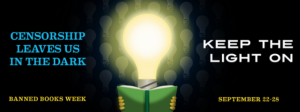Friday, September 27: The Catcher in the Rye by J.D. Salinger

Everyone recognizes this cover by the end of high school.
September 27, 2019
This “love it or hate it” book continues to ostracize high school students to this day, despite the many challenges and bannings. Those who have attempted (and, in many cases, succeeded) to ban the book tend to express their discontent in the vaguest of terms. For example, when the novel was banned in the Corona Norco, California school district in 1993 because it “centered around negative activity.” A Florida high school called it “unacceptable and obscene,” while a Columbus, Ohio highschool decided upon “anti-white and obscene.” One Tulsa, Oklahoma school went as far as firing a teacher who assigned the book to his eleventh grade english class in 1960. Though he was later reinstated, this act of injustice is a perfect segue to end our discussion of banned books. For centuries, American educators have been paying a high price in the crusade for literary freedom and wholistic education. In a society when books can be banned for such nondescript issues as “obscenity” or “negative activity,” it is impossible for children to be educated on perspectives that reach further than their own community. However, in the words of American author Kurt Vonnegut, “books are sacred to free men.” Freedom of information is the essential foundation of any free society.

Visit the American Library Association for access to free resources, information on banned books, and a detailed history of censorship in America.









